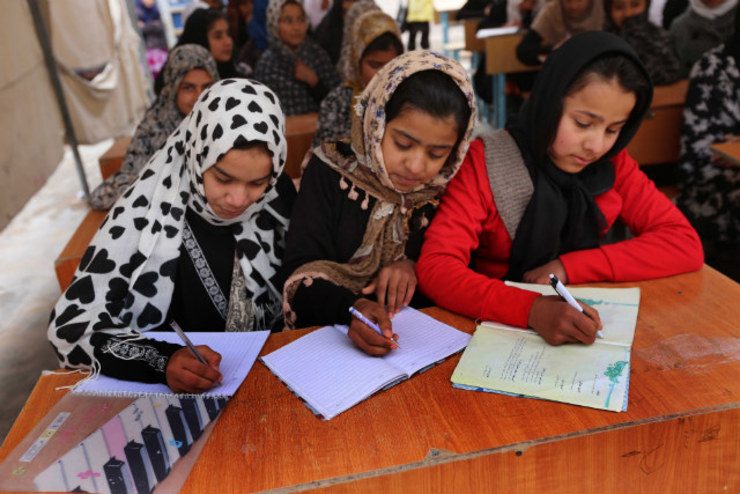SUMMARY
This is AI generated summarization, which may have errors. For context, always refer to the full article.

MANILA, Philippines – A recent report by the United Nations Development Programme (UNDP) showed that inequality in education – although declining – remains high, especially in the regions of South Asia, the Arab States, and the Sub-Saharan Africa.
The 2014 Human Development Report (HDR) entitled Sustaining Human Progress: Reducing Vulnerabilities and Building Resilience was released on Thursday, July 24.
It showed that high disparities in education continue among regions and there has been limited progress in reducing them except in Europe and Central Asia.
South Asia has the highest level of inequality in education (42%), followed by the Arab States (41%), and the Sub-Saharan Africa (37%). Norway, Finland, and Czech Republic have the lowest levels of inequality.
The annual report, which focuses on key development issues, also showed that older generations continue to struggle with illiteracy, while younger ones are experiencing difficulty in transitioning from primary to secondary education.
For education, the UNDP measured inequality in distribution of years of schooling based on data from household surveys estimated using the Atkinson inequality index.
Another UN agency, Unesco, reported there are 774 million illiterate adults all over the world as of 2011. Almost two-thirds of the number are women.
Meanwhile, 69 million adolescents are out of school even if lower secondary schooling is deemed the most effective way to acquire foundation skills.
Unesco said not a single goal of the Education For All initiative – one of the many efforts being made to achieve the Millennium Development Goals – will be met by 2015. (READ: Education for all by 2015? Not happening, says Unesco)
Reducing inequality
The recent UNDP report showed a slight decline in overall inequality in most regions. The decline may be attributed to health improvements in recent years.
Overall inequality was measured by the Inequality-Adjusted Human Development Index (IHDI) calculated for 145 countries.
The IHDI was introduced in the 2010 HDR and considers not only income-based measures of inequality but also disparities in education and health.
Inequality, the 2014 UNDP report said, not only is unjust but also hinders future human development, affecting well-being and threatening political stability.
“When specific groups are discriminated against, resources and power are not distributed based on merit, and talented people are held back. Such group inequality fuels dissatisfaction and grievances,” the report added.
The report stressed on the importance of universal access to basic social services (education, health care, water supply and sanitation, public safety) and adequate policies and resources to reduce inequality in all dimensions of human development.
Other threats to human development other than inequality include economic risks, health risks, environment and natural disasters, food insecurity, and physical insecurity. – Jee Geronimo/Rappler.com
Add a comment
How does this make you feel?
![[In This Economy] Is the Philippines quietly getting richer?](https://www.rappler.com/tachyon/2024/04/20240426-Philippines-quietly-getting-richer.jpg?resize=257%2C257&crop=194px%2C0px%2C720px%2C720px)
![[In This Economy] A counter-rejoinder in the economic charter change debate](https://www.rappler.com/tachyon/2024/04/TL-counter-rejoinder-apr-20-2024.jpg?resize=257%2C257&crop=267px%2C0px%2C720px%2C720px)
![[Vantage Point] Joey Salceda says 8% GDP growth attainable](https://www.rappler.com/tachyon/2024/04/tl-salceda-gdp-growth-04192024.jpg?resize=257%2C257&crop_strategy=attention)
![[ANALYSIS] A new advocacy in race to financial literacy](https://www.rappler.com/tachyon/2024/04/advocacy-race-financial-literacy-April-19-2024.jpg?resize=257%2C257&crop_strategy=attention)

There are no comments yet. Add your comment to start the conversation.